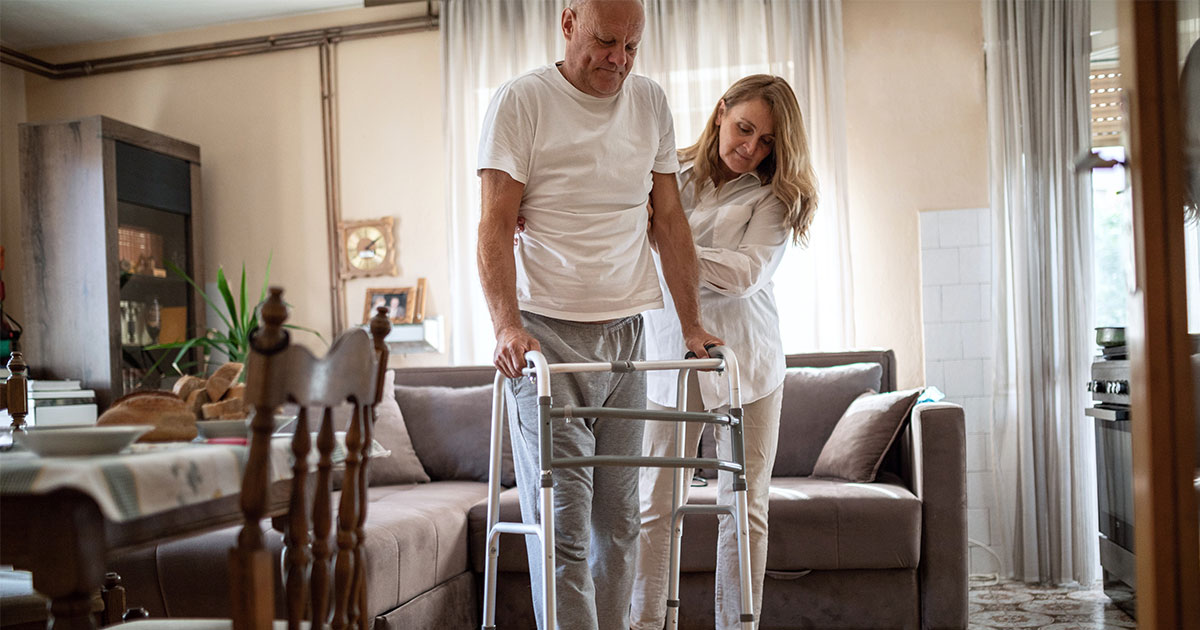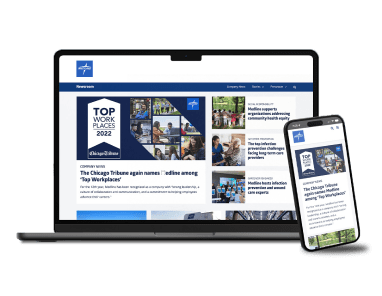Opportunities and challenges shaping the HME industry

By Medline Newsroom Staff | August 3, 2023
There’s a continued shift from traditional care within a clinical care setting to care within the home. By 2025, McKinsey estimates that at-home care will represent up to 25% of Medicare recipient care costs. For the home medical equipment sector, this shift presents tremendous growth opportunities along with the potential for persistent workforce shortages and other challenges.
As the landscape continues to evolve, Paul Miller, Medline’s director of business development for HME, says there’s a greater need to look at how industry partnerships and investments in technology can help improve business efficiencies, mitigate workforce shortages and foster continued growth. The Medline Newsroom recently spoke with Miller, who has nearly 20 years of experience working with HME owners.
- What do you see as the biggest opportunities propelling HME dealers in the next few years?
- Miller: The investment in patient-centered care is creating greater opportunities for partnership and innovation in the HME space. We are seeing the needs of consumers change as the desire to stay home is at an all-time high. In the past, patients primarily accepted whatever insurance would cover, often settling for the bare minimum. Now they are seeking products that cater to their lifestyle. HME providers should take a closer look at how industry partnerships with suppliers can help manage growth for the future. Going through the pandemic and allocation from supply chain challenges led business owners to reconsider their partnerships and identify those capable of helping them scale their businesses. Medline is actively working on expanding its MedTrans transportation to diversify parcel capabilities. We are also expanding our product lines, especially in respiratory equipment, to become a one-stop shop for HME owners.
“The investment in patient-centered care is creating greater opportunity for partnership and innovation in the HME space.”

Paul Miller
Medline Director of Business Development, HME
- What are some of the biggest challenges facing HME?
- Miller: Reimbursement reform is an ongoing priority for HME providers, as the rates they are currently being reimbursed at are still based on 2015 figures. Implementing rate floors, especially in traditional Medicaid and managed Medicare states, will help keep patients at home while managing the cost of care.
- Another challenge is related to auditing requirements. This process is usually inconsistent and varies by insurance plan. An HME owner can potentially have numerous contracts with different insurance plans, each with its own unique auditing requirements. Due to limited resources and the lack of suitable technology to facilitate audit management, HME owners often struggle to meet these demands. Consistent regulations can help ease the burden HME owners face.
- How is advocacy helping HME owners overcome these challenges?
- Miller: HME owners are well aware of the issues impacting their business and everyone has ideas on what can move the industry forward. Advocacy is an important step in having your voice be heard. Writing letters and signing petitions are common traditional forms of advocacy, but social media has become a tool for connecting with like-minded people to create a larger network of supporters. It is important for Medline to understand the issues impacting customers. That’s why in 2023 Medline attended the AAHomecare Leadership Legislative Fly-In to advocate on behalf of HME owners and speak with Congressional leaders on issues impacting the industry. The following are a few ways HME providers can get involved in advocacy:
- – Join state associations to access valuable resources, information, and opportunities to collaborate with other providers in the industry
- – Contact legislators, including local, state and federal legislators to discuss the issues affecting the HME industry. Personalized letters, emails, or phone calls can make a significant impact on raising awareness and influencing policy decisions.
- – Share data and stories to help illustrate the importance of the HME industry’s role in providing essential care and services to patients.
- – Collaborate with suppliers to communicate needs and challenges. Collaborative efforts between HME owners and suppliers can lead to mutually beneficial solutions.
- As the workforce shortage continues to challenge the industry, what are some of the ways HME dealers can succeed in staff recruitment and retention?
- Miller: I recommend thinking outside the box when recruiting staff. Just as owners establish their business due to a passion, employees are increasingly seeking purpose in their work. Career development programs can have a positive impact on engagement and retention. Additionally, as more employees seek convenience around daily operations, consider how technology can be incorporated. For example, patient referrals are often still taken through a fax machine. Technology can streamline patient information and provide a full view of what is happening and where the patient is in their transition of care from facility to home or even from home to home. Technology can be a great tool to keep all parties informed, including the patient and their families, about their care progression.
Learn more about how Medline supports HME providers to help them grow their business.
Medline Newsroom Staff
Medline Newsroom Staff
Medline's newsroom staff researches and reports on the latest news and trends in healthcare.


